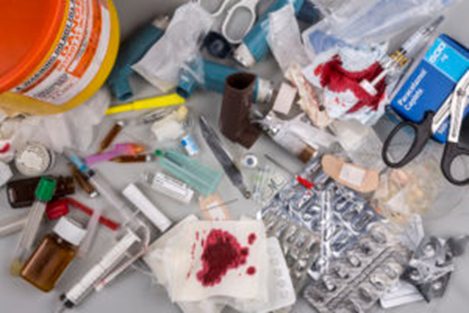
What Are the Proper Steps of Pharmaceutical Waste Disposal?
Hazardous pharmaceutical waste comes with certain risks that require proper disposal. If your healthcare organization disposes of pharmaceuticals inefficiently, you can affect the environment in negative ways. Pharmaceuticals can even end up in the water supply and affect human health through drinking water. This is why the government at federal and state levels has created waste regulations for pharmaceutical disposal. It’s important for healthcare facilities to know the laws. Then, they can follow them to make sure they are protecting the environment and our human health. Here are proper steps for pharmaceutical waste disposal.
Types of Hazardous Pharmaceutical Waste
A broad range of healthcare settings can generate pharmaceutical waste. They then need to handle it correctly. Your healthcare organization could be facing many types of pharmaceutical waste. This waste goes beyond expired pharmaceuticals. This type of waste can also include spills and containers with small amounts of toxic substances. Protective gear and packaging can also be included with pharmaceutical waste. The types of waste can come with differing dangers. That’s why you should handle them according to their type.
In the United States, the most common designations for pharmaceutical waste include:
- Resource Conservation and Recovery Act (RCRA) hazardous waste
- State-only dangerous waste according to the state’s Dangerous Waste Regulations
How to Handle Waste Disposal
A controlled substance or a viable pharmaceutical that can be used should be sent to a manufacturer or to a reverse distributor. After that, there are different ways you can handle the rest of the pharmaceutical waste that is left over. Your health organization can send all of your pharmaceutical waste to a RCRA-permitted facility. Alternatively, you can send just RCRA pharmaceutical waste to the RCRA-permitted facility. Then, you can send the rest to an incinerator as state-only dangerous waste. There is also a third option. After sending RCRA waste, separate the rest into state-only and not state-only waste. The first pile can go to the incinerator and the rest should follow the guidance of the local health district. Many states are creating tighter restrictions for pharmaceutical waste disposal, which could affect the waste at the state level.
The Organizational Level
The previous steps tell you what to do for proper disposal. But each organization needs a plan for managing pharmaceutical waste. The top levels of the health facility, such as management or ownership, should allocate finances to help the organization comply with hazardous material disposal. In addition, the management should provide qualified and experienced staff members to be in charge of addressing compliance.
When a system is in place for medical waste, designated staff should perform comprehensive audits of each waste stream generated by the facility. This audit should include a waste characterization for each type of waste. This includes each drug and the dose of each drug. This audit can be performed in different ways. The staff members can analyze the waste. They can check with manufacturers and/or suppliers of the medical products. Also, they can review the material safety data sheets.
State regulations on waste can change over time. Because of this, staff members need to pay attention to shifting state regulations. This way, they can continue to comply. Further, the organization can look for methods of cutting down on pharmaceutical waste.
For your organization to properly handle pharmaceutical waste disposal, be aware of RCRA and state guidelines on medical waste. Make sure your organization is complying. Also, your organization needs to give enough resources and create processes for disposal. These steps help everyone to properly manage waste.
